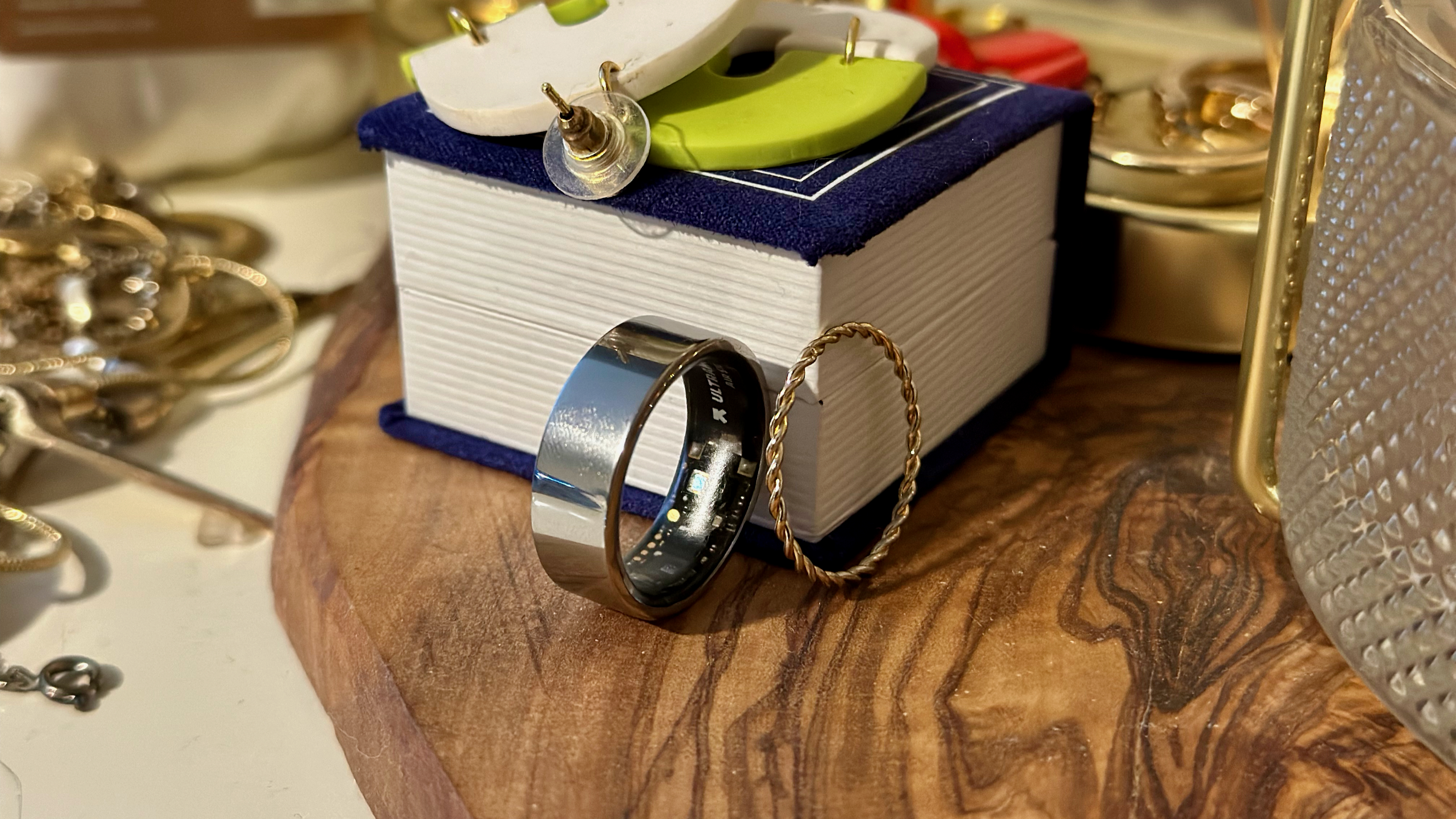
I hate wearing smartwatches for sleep tracking, which made the Ultrahuman Ring Air extremely tempting to review. To me, smartwatches are perfectly comfortable during the day but feel oppressive jammed between my sweaty wrist and pillow at night, and the health data becomes unreliable without the perfect fit. A petite smart ring with the same sensors was the solution I didn't know I needed.
Launched after a successful Kickstarter last year, the Ultrahuman Ring Air is thicker than your average, non-smart ring but skinnier and longer-lasting than competing smart ring brands. It's also fairly expensive upfront, but you'll save money in the long run due to the lack of a subscription.
Compared to the popular Oura Ring Gen 3 — which does charge a monthly fee for additional features and is heavier — the Ultrahuman Ring Air is a compelling alternative, but also a work in progress, still receiving beta features and app tweaks in response to customer criticism. It also has the upcoming Samsung Galaxy Ring and rumored Apple Ring to compete with, but those are still down-the-road products.
How you feel about the Ultrahuman Ring Air will depend on your feelings about smartwatches in general. Smart rings are more accurate in some cases but less accurate or feature-rich in others. A smart ring won't replace your current smartwatch; the question is whether you want or need one in addition to your watch.
Ultrahuman Ring Air: Models, price, and availability
The Ultrahuman Ring Air launched in September 2023, following the Ultrahuman Ring R1. It comes in four finishes — Aster Black, Matte Grey, Bionic Gold, and Space Silver — and ten ring sizes from 5–14. All ring models cost $349, and they are available on Amazon or the company website.
Ultrahuman says its ring sizes "differ slightly from standard US ring sizes, and we don't offer half sizes," recommending that you use its own sizing kit before buying one. If you buy directly from Ultrahuman, you can have a sizing kit shipped for free before you choose a size; otherwise, you can buy the kit on Amazon first for $1.
Buying directly from Ultrahuman also lets you add an engraving for $39, as well as a protection plan for damage or loss coverage for $2.50/month. Unlike the Oura Ring, there's no subscription to see all of your ring's health data.
The Ring Air comes with a proprietary charger, on which you seat the ring to recharge it in a couple of hours, and a USB-C charging cable (but no charging block).
Ultrahuman Ring Air: Specs and data
Before diving into my likes and dislikes, let me run through what data the Ultrahuman Ring Air actually tracks for you — and what it doesn't track.
Generally, its health sensors measure heart rate, heart rate variability (HRV), blood oxygen, and skin temperature — all standard data for smartwatch owners. It also has a built-in accelerometer to track steps.
Specifically, the Ultrahuman Ring Air focuses on sleep quality. If worn at night, the ring will send data to the Ultrahuman app like your total sleep time, your sleep stages (i.e., REM or deep), your lowest and average heart rates, how quickly your heart rate drops to proper resting levels, how your HRV and skin temperature compare to your baseline, how often you moved around at night, and your overall "restoration" and "efficiency."
Beyond that, you'll see a post-sleep Recovery Score, similar to what other fitness brands offer, along with a daily "Movement Index" at the top of the app that essentially tells you if you're getting enough steps and moving around with enough regularity.
You can also see a heart rate graph for the day, a guide to when "stimulants" like coffee or excess light won't affect your sleep quality, your VO2 Max estimate, a timeline of key moments in the day like workouts, and whether you're hitting daily goals like getting enough sleep or activity.
As for what you don't get? Aside from the lack of display, you won't find any haptics in this ring for vibrating notifications or alarms. It doesn't have any "Find My" tool if you misplace it. You won't see any data on irregular heart rhythm (AFib), nor an actual "Stress" metric beyond HRV. And there's no built-in GPS or gyroscope for tracking workouts. Aside from stress tracking, most smart rings lack these features, however.
Ultrahuman Ring Air: What you'll like
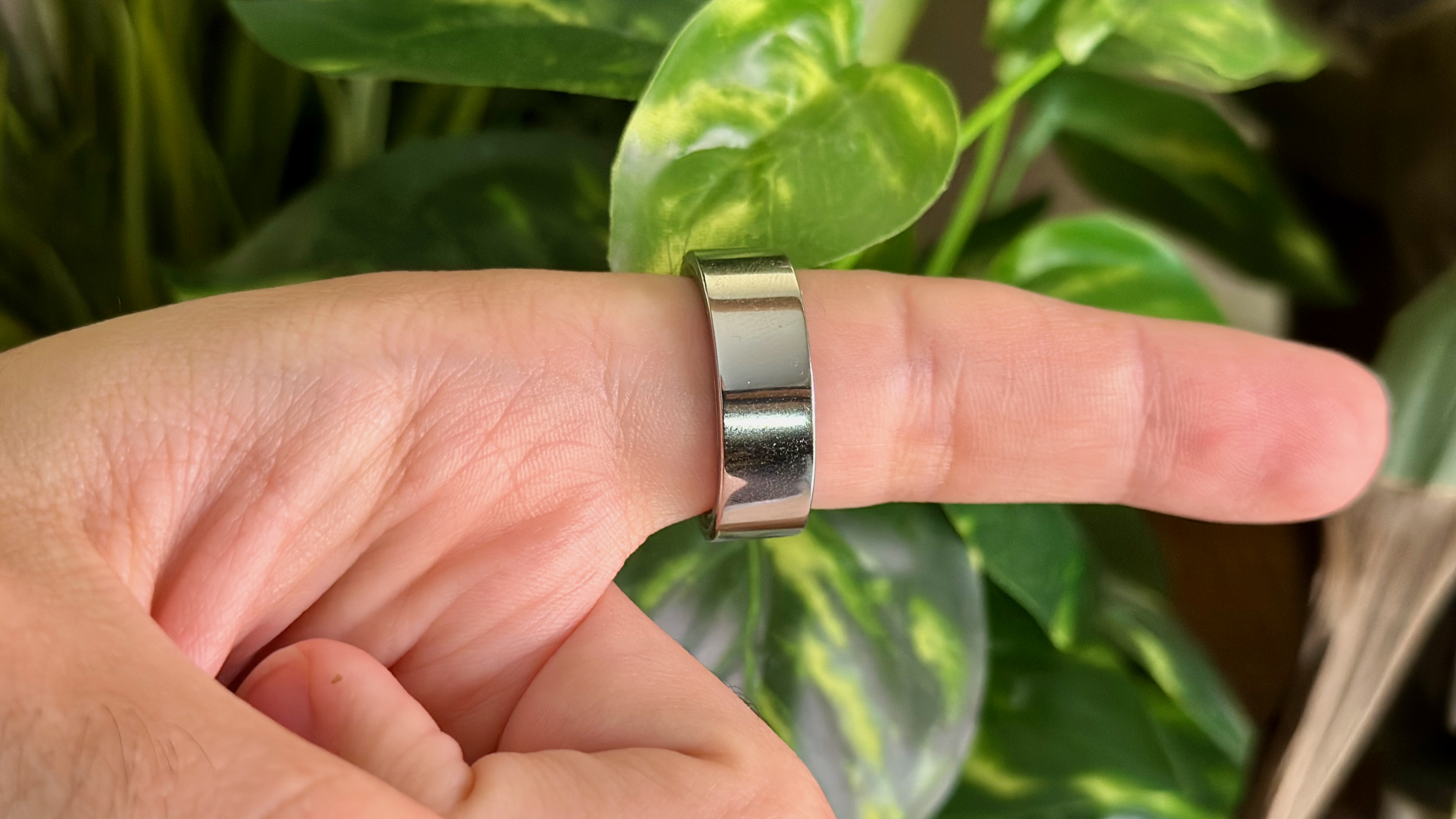
I've worn the Ultrahuman Ring Air for the past couple of weeks, and with each passing day, I'm less and less aware of its presence.
At first, I wore it on my dominant hand's index finger, but I realized this was a mistake. It can get in the way of little things like scraping against a metal fork grip, pulling a game controller trigger, or when (ahem) duty calls. While it occasionally gets in the way on my left hand, it comes up much less often.
Outside of those rare instances, I don't notice that I'm wearing the ring for hours at a time — and I'm not someone used to wearing jewelry. Considering I type words for a living, you'd think I'd be more aware of it, but its lightness and soft inner resin coating ensure otherwise.
As a side-sleeper, I appreciate how it doesn't press against my skin like a smartwatch does at night. In fact, because it's well-fitted, it seems to keep a tight seal around my entire finger, which keeps my nightly results consistent. For comparison, I'd find that a smartwatch would press too hard against (or separate from) my wrist, skewing the results.
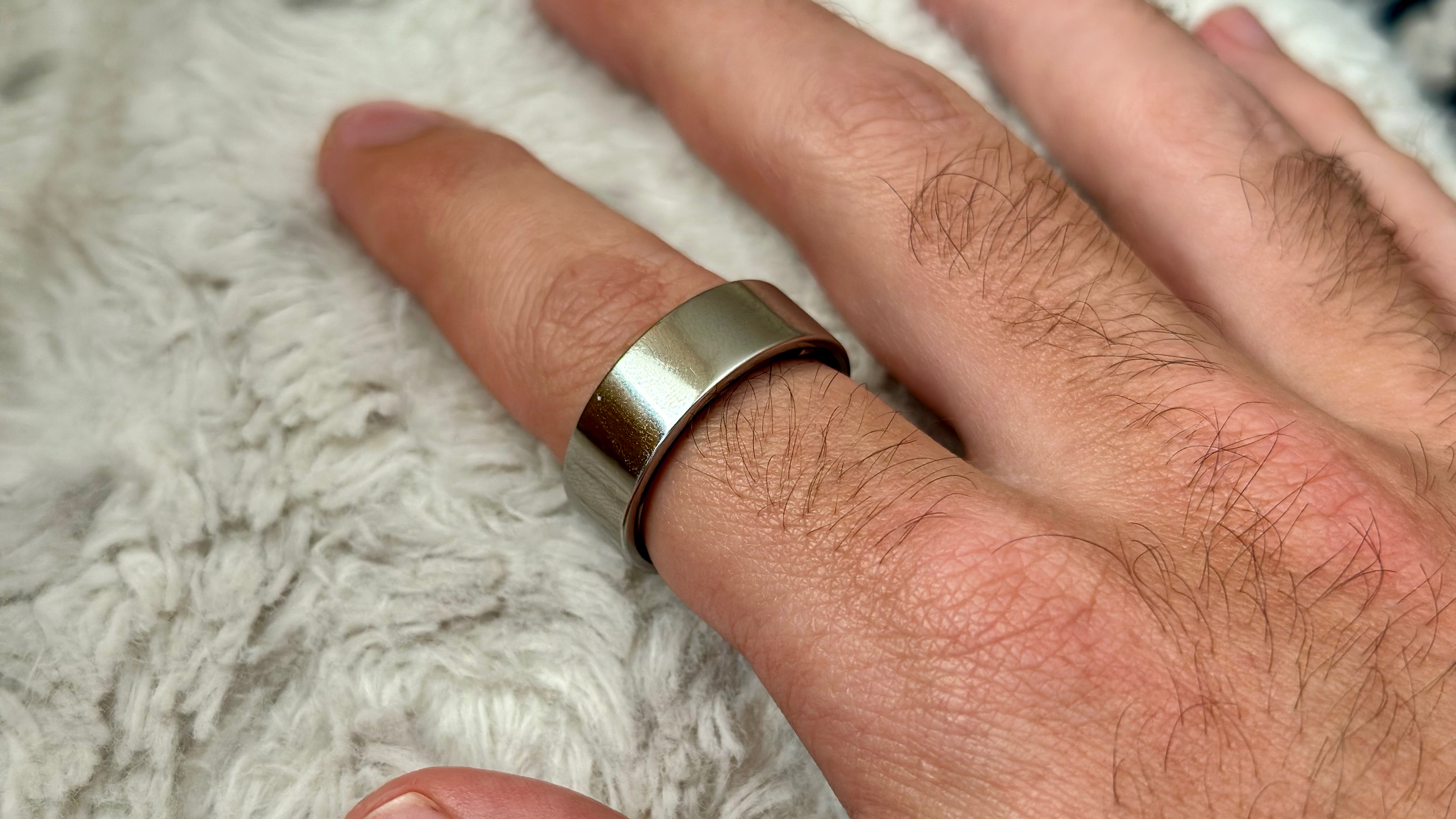
Of course, other people see it on my finger in day-to-day life. Its size makes it eye-catching, but the design itself is fairly spartan and uniform. It feels like you're wearing tech, not jewelry; that may or may not appeal to you. Personally, I find that it matches well with my Garmin Forerunner 965 for an athletic vibe, but others will find it too boring.
When I tell people what it is, they inevitably ask if they can try it on. The typical response is surprise at how light it is, so I'm not alone in the feeling.
Ultrahuman sent me the Space Silver model, which makes a metallic impression but so far seems to withstand any scrapes or grime buildup over time. That said, I think only the Gold and Silver rings would do well in this area, while the Black and Grey rings are more subtle but might be more prone to showing wear and tear.
Packed with (seemingly accurate) data
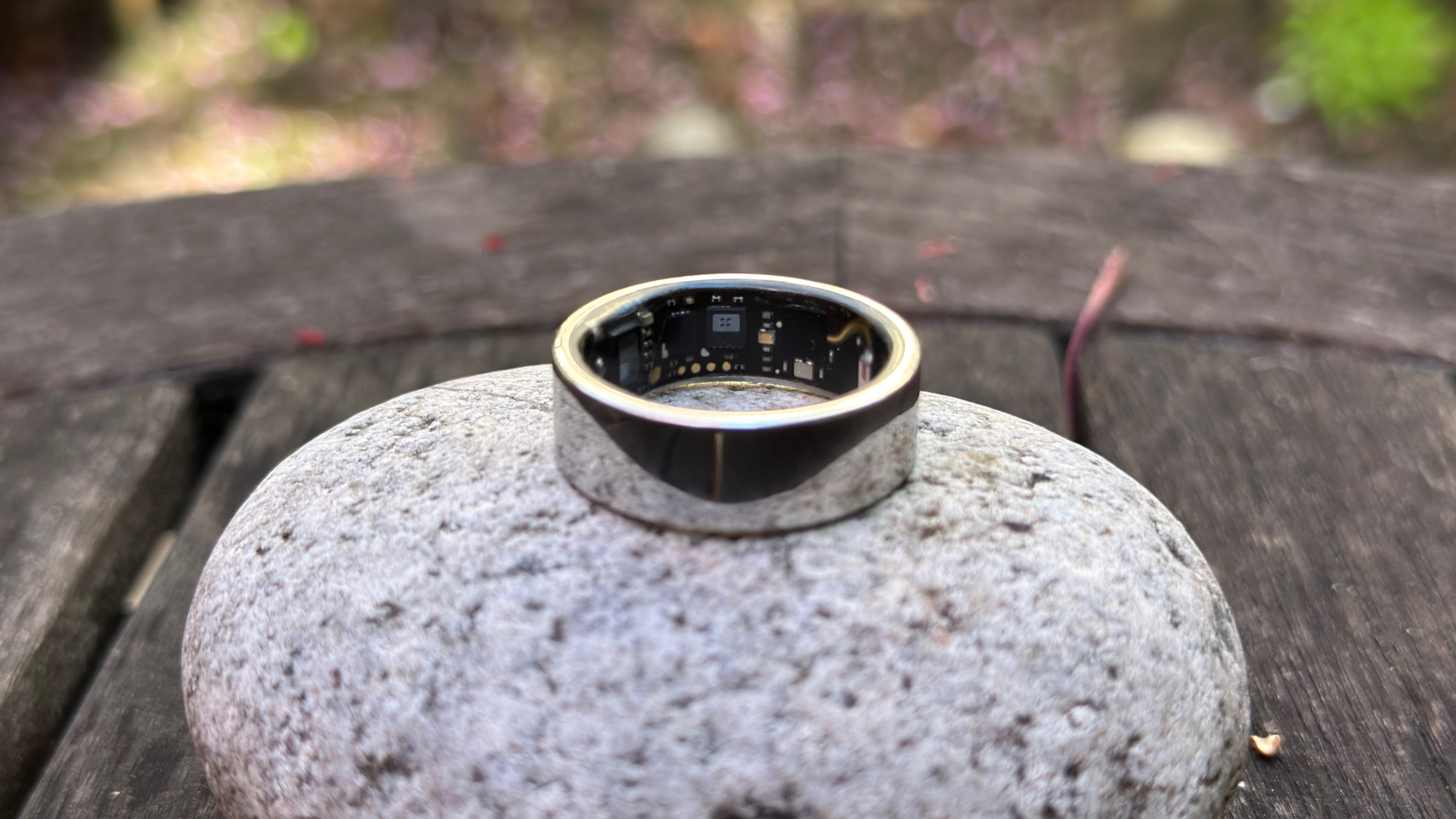
As mentioned above, the Ultrahuman Ring Air comes packed with sleep data, primarily concerning your heart health and sleep quality. The main focus is on your resting heart rate, HRV for stress and recovery, sleep zones, restlessness, and skin temperature.
I can only speak to my personal experience, but thus far, my sleep data seems to be quite accurate. It knows when I've failed to fall asleep, it continues to track without fail after early-morning bathroom visits, and its recovery score matches my tiredness level.
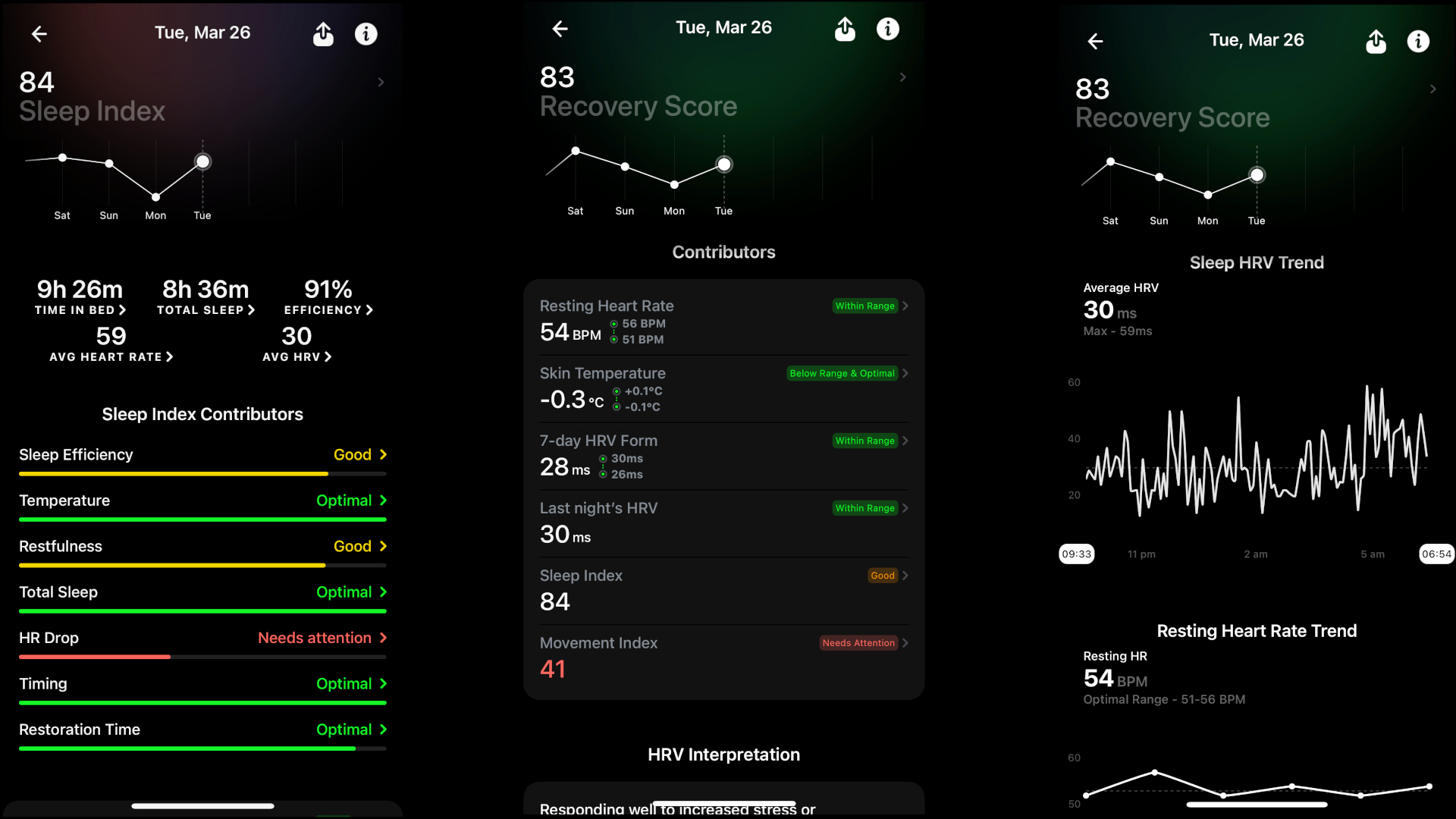
Specifically, my resting heart rate (mid-50s, good for my age) and HRV (high 20s–low 30s, poor for my age) are comparable to my Garmin watch sleep data on the rare times I've made myself wear them overnight. Specific Ring Air spot-check readings can be erratic, but my averages are on point; I recommend focusing more on daily or weekly trends than individual readings.
I'm not going to dive into my specific medical history, but Ultrahuman's data has given me some actionable data for a worrying health point that was easier to ignore when I skipped wearing a smartwatch at night. For me, that makes it worth the high initial price, as I can now monitor my trends as I work to resolve the issue.
No subscription required
While Oura and Fitbit demand a monthly fee before unlocking health reports and the most in-depth information on stress, daily readiness, and so on, Ultrahuman makes this data available for "free" after you've bought a ring.
At any point, you can check your ring's "weekly insights" on everything from sleep and recovery to steps and average movement from a daily or hourly perspective. It's easy to ignore the need to move throughout the day instead of just all at once during a workout, but Ultrahuman points out your weak points there.
I do wish there were separate weekly insight reports for different areas, as my current report seems more fixated on movement than on sleep and recovery. However, since most of the main page data focuses on sleep and recovery, it's not a major issue.
Reliable battery life
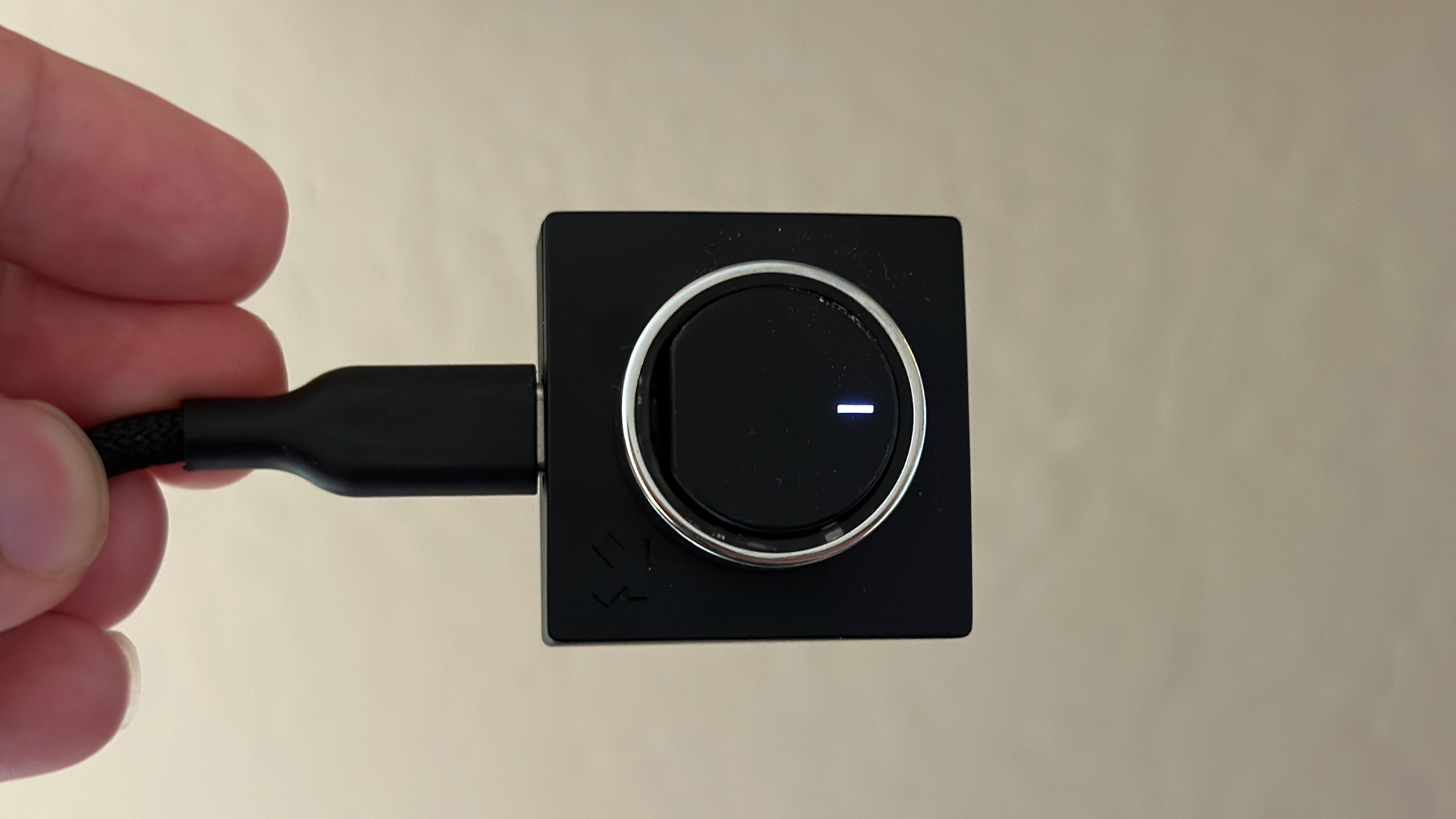
Ultrahuman estimates that the Ring Air lasts about 4–6 days per charge. In practice, I'd say 5 days is a pretty reasonable estimate in my experience, with the drain only increasing if you use the Workout mode to track heart rate more frequently.
For comparison, the Oura Ring Gen 3 lasts 4–7 days, with our reviewer estimating six days in his tests, while other brands like RingConn have a similar estimate. You have to decide if the Oura Ring's slightly heavier weight is a fair trade-off for an extra day.
In my opinion, the recharges are spread out enough that they don't bother me. Smart rings aren't as essential as a smartwatch in terms of notifications, so I don't notice the absence as much. I worry about what'll happen after a year or two when the battery capacity wears down, but that's a concern for any smart ring.
Truly, my only complaint is Ultrahuman's really annoying low-battery notifications, which I'll discuss later on.
Ultrahuman Ring Air: What needs work
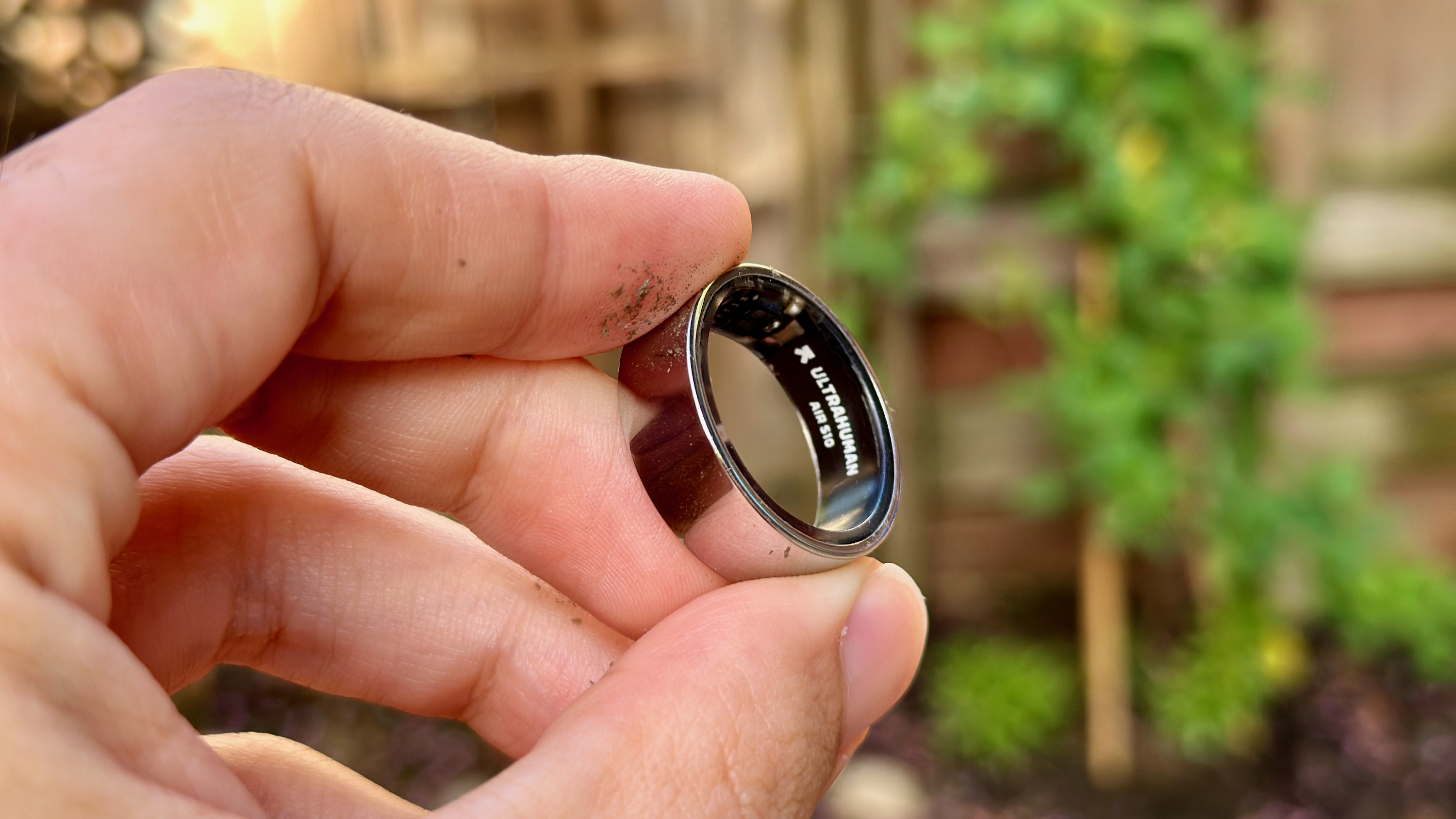
Ultrahuman CEO Mohit Kumar is active on the company's subreddit, responding to users' complaints and feedback. In one instance, he responded to a Reddit complaint about fitness accuracy, noting that the Ultrahuman Ring Air is "optimised for HR and HRV at rest," but that "HR during motion is a work in progress" and to check if the new firmware update provided better results.
I think it's fair to say that, in some ways, using the Ultrahuman Ring Air is like being an Early Access gamer on Steam. You're getting an in-progress experience with regular updates and new features, but some are implemented better than others or tinkered with from one day to the next.
Specific to fitness tracking, smart rings are meant to be fitted closely to your finger at rest, but during workouts, your fingers will swell from increased blood flow, which can in turn skew your results. Ultrahuman's algorithm is meant to combat that, but it'll depend on how well your ring fits.
I noticed early on during a jog that my Garmin Forerunner 165 showed my heart rate at 140 bpm and the Ultrahuman Ring Air had me clocked in the mid-180s. My final averages were pretty close to those numbers, unacceptably far apart.
For my second run, I swapped my Ring Air to my smaller left index finger to see if it made a difference, and it did! This time, my averages were 144 bpm for Garmin and 153 bpm for Ultrahuman — still off, but less unreasonably so. The same applies to the estimated caloric burn (410 vs. 470). My hope is that Ultrahuman can continue to improve this algorithm over time.
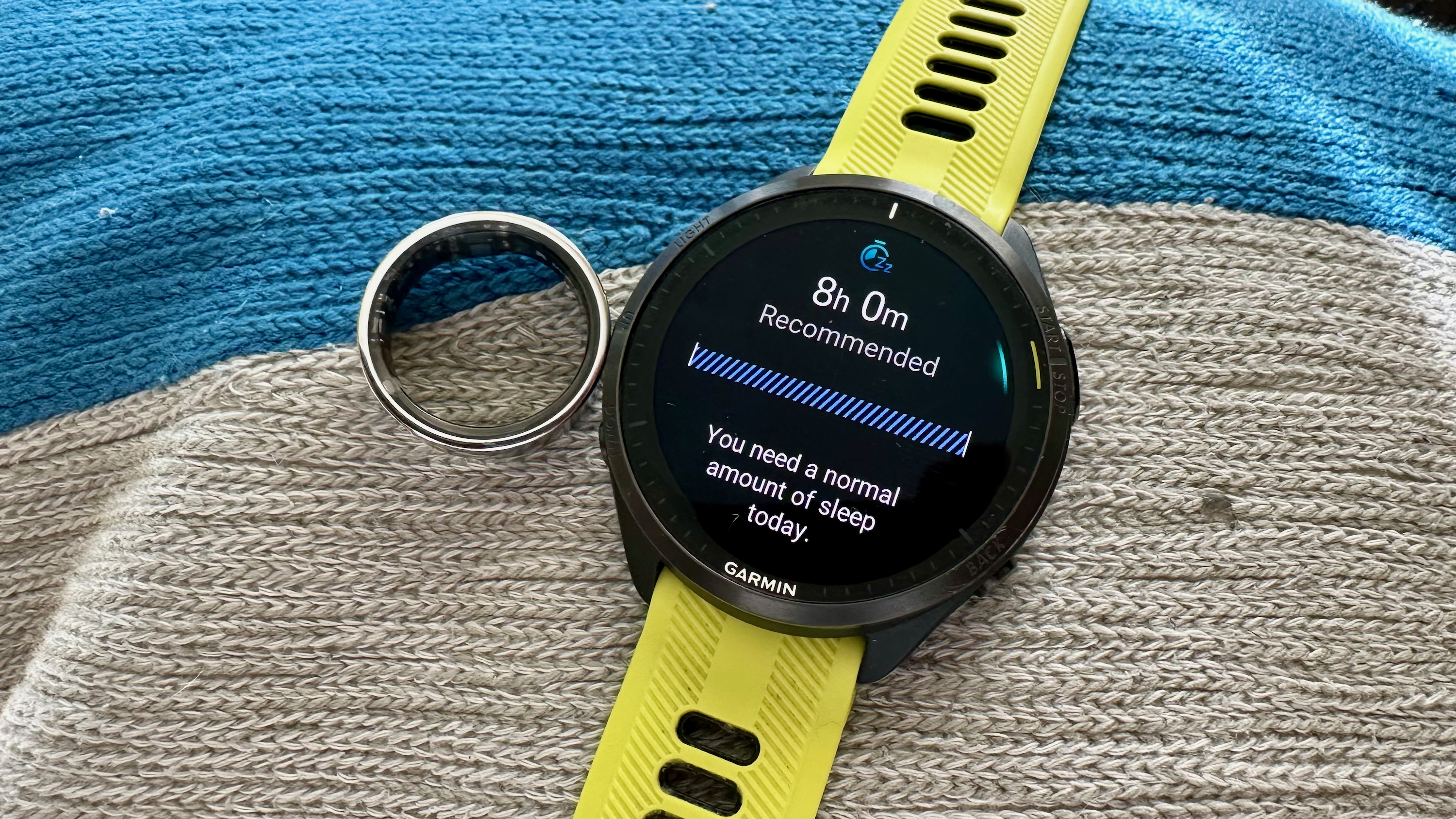
Because my heart rate workout data is off, Ultrahuman's VO2 Max estimate for me (44) is pretty far off from my Garmin VO2 Max estimate (51). It'll improve with more running data to offset that terrible first impression, but my main point here is that I wouldn't use this smart ring — or any smart ring, really — as a primary source for workout data. It's not designed for it.
I also find that the Ring Air is more prone to false steps from tapping keys or my hand bouncing on my knee than a fitness watch is: I'll get hundreds of steps and a high movement score while working at my desk. Once out for actual walks, it seems to slightly undercount my steps, which usually balances out the earlier false steps.
For comparison, my Garmin Forerunner 165 — which beat other fitness brands in a step-tracking and HR accuracy test — measured 17,446 steps after nine miles of walking and running, while my Ultrahuman Ring Air hit 18,058 steps. Most of the discrepancy comes from those initial false steps, but you still get a decent sense of how active you were that day.
I only have one "beta" data point that I'm truly suspicious of: the Ultrahuman Ring Air measures blood oxygen levels overnight, but it's never shown me under 99% and typically shows me at 100%. I'd love for this to be true, but across most of my smartwatch SpO2 tests over the years, I'm typically somewhere between 96–98%. Since Ultrahuman doesn't show an SpO2 graph like it does for heart rates, I don't think I can trust this data.
Hard to find the app data you want
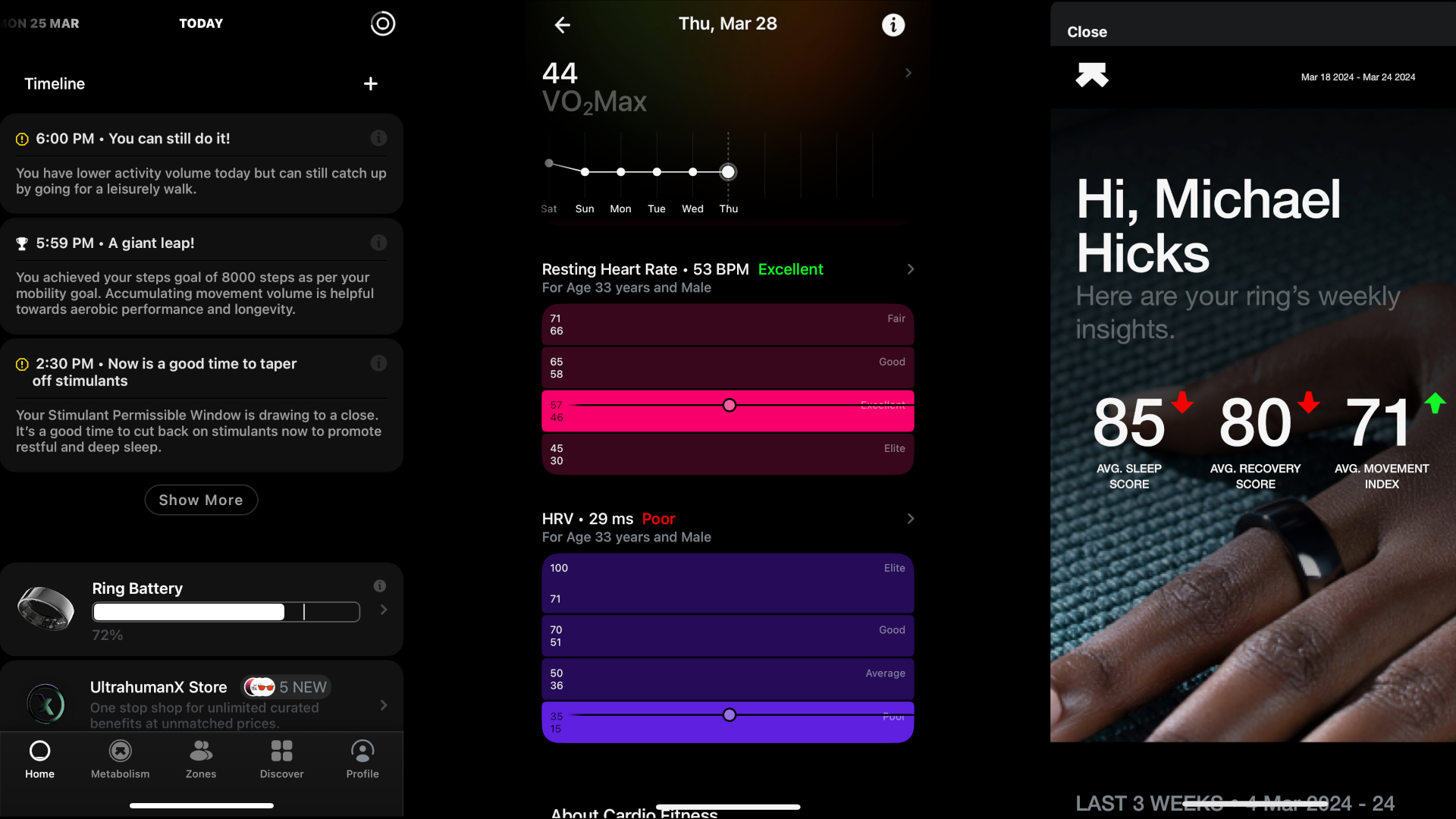
Ultrahuman's app needs work. All of the most useful data is crammed into submenus on the main tab, and it's not always clear where to find specific data.
For example, you'll find how your resting heart rate and HRV scores compare to people your age under VO2 Max, which isn't very intuitive. Your nightly HR and HRV data are under Sleep Index, but your weekly HRV range is found in the Recovery Score widget.
I also don't like how certain graphs default to the last reading it took rather than the daily average. You'll have to tap away from "Today" to "Daily" to see a more relevant average instead of a recent spot-check.
All of this data is clumped within the main Home tab. The Ultrahuman app has tabs for Metabolism — which you can only access with its Ultrahuman M1 glucose monitor — a Zones tab for socializing with other ring wearers, and a Discover tab for workouts like yoga and pilates, meditations, bedtime stories, and the Ultrahuman podcast. There's also a fifth profile tab for changing your settings and checking your weekly insight reports.
Personally, I'm not sure I'd want friends to see how badly I slept — even if they did have Ultrahuman rings, and the Metabolism tab feels like I'm being upsold to buy their monitor. I'd prefer to have customizable tab options if I want to pull up specific information with a single tap instead of scrolling through and tapping the right widgets.
You can have your data exported to Google Fit, Apple Health, Garmin Connect, Fitbit, Polar, Suunto, Wahoo, MyFitnessPal, and a few other fitness apps if you prefer.
Nagging notifications
Unlike smartwatches, smart rings can only communicate through phone notifications. In some ways, this is nice: vibrating watch notifications get tiresome. But in other ways, Ultrahuman needs to chill out.
It sends several daily notifications about when to enjoy or abstain from "stimulants" like coffee to ensure your sleep isn't disrupted. Thankfully I could disable these in the app settings, since I don't drink coffee. You also get regular reminders on when to avoid bright screens for your circadian rhythm — advice I'm not especially good at following, but I appreciate.
Add in post-sleep summary notifications, movement alerts, praise for moving enough, shout-outs for hitting specific goals, and so on, Ultrahuman has become the most common notification on my smartphone. It's a bit much!
The absolute breaking point, though, is when my smart ring falls below 30% battery. At that point, Ultrahuman will buzz me every few hours warning me to recharge, and that's not an exaggeration. Since that's enough battery for nearly two days of use, that means two days of pestering! I don't get the urgency and wish Ultrahuman would only bother me at specific increments (aka 20%, 10%, and 5%).
I know full well that stand alerts are important for bodily health, but in other respects I wish the smart ring were more of a silent companion I could check on at my convenience.
Ultrahuman Ring Air: Competition
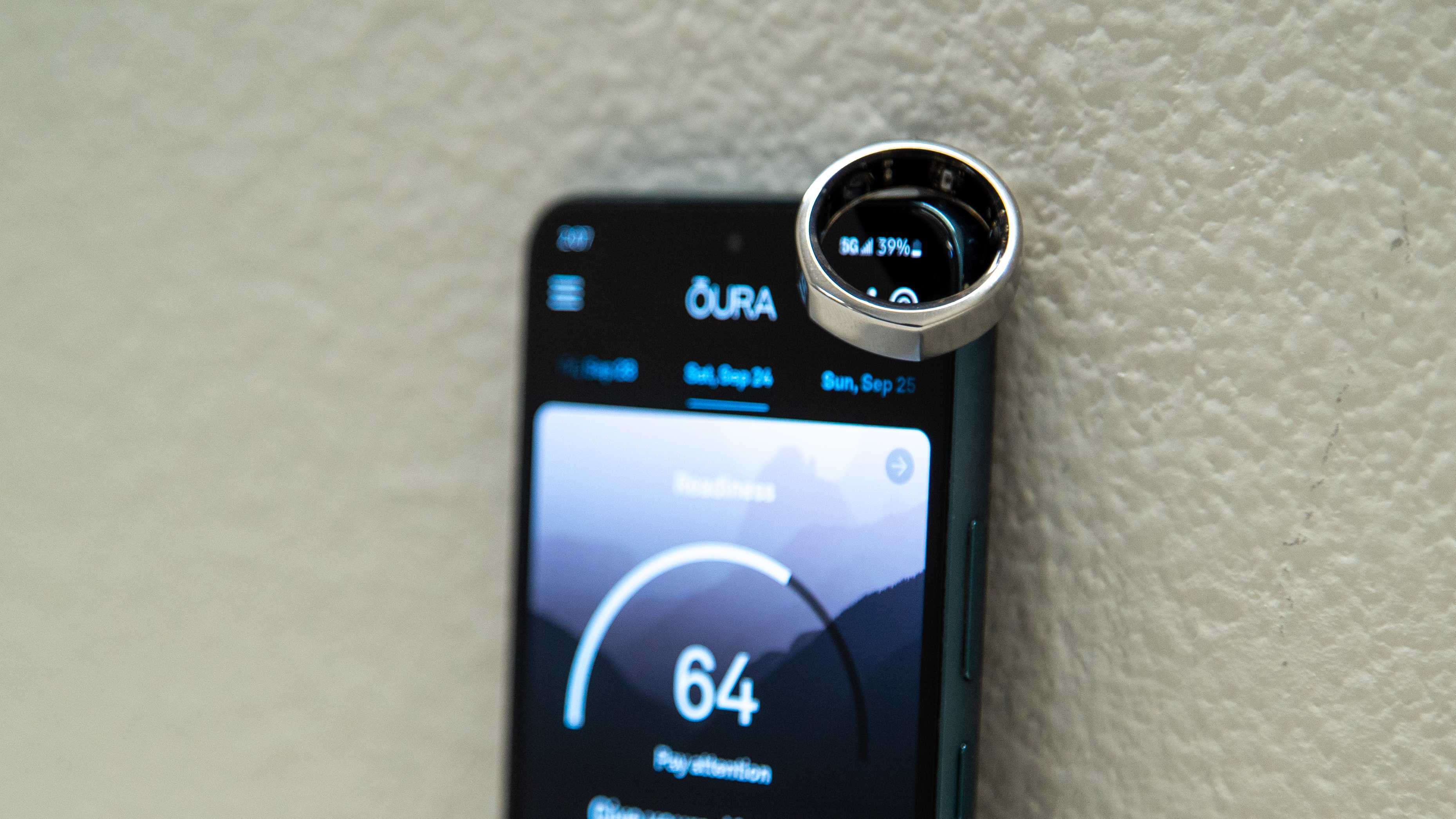
Android Central is new to reviewing smart rings, and the category itself is nascent. We've yet to test other relatively popular brands like RingConn and Circular, and other relatively well-known fitness brands like Amazfit and Noise are entering the ring (pun intended) soon. Meanwhile, the Samsung Galaxy Ring should be a major rival to all the current brands later this year. But this early in the game, it's hard to say which, if any, is the "best" without further testing.
While I hate wearing wrist-based wearables to bed, anyone without that particular hang-up might have better luck with a reliable fitness tracker like the Fitbit Charge 6. It costs half as much as the Ultrahuman Ring Air, has the same tracked data, gives you notifications and Google apps, and is relatively lightweight — though still 10X as heavy as a smart ring.
Ultrahuman Ring Air: Should you buy it?
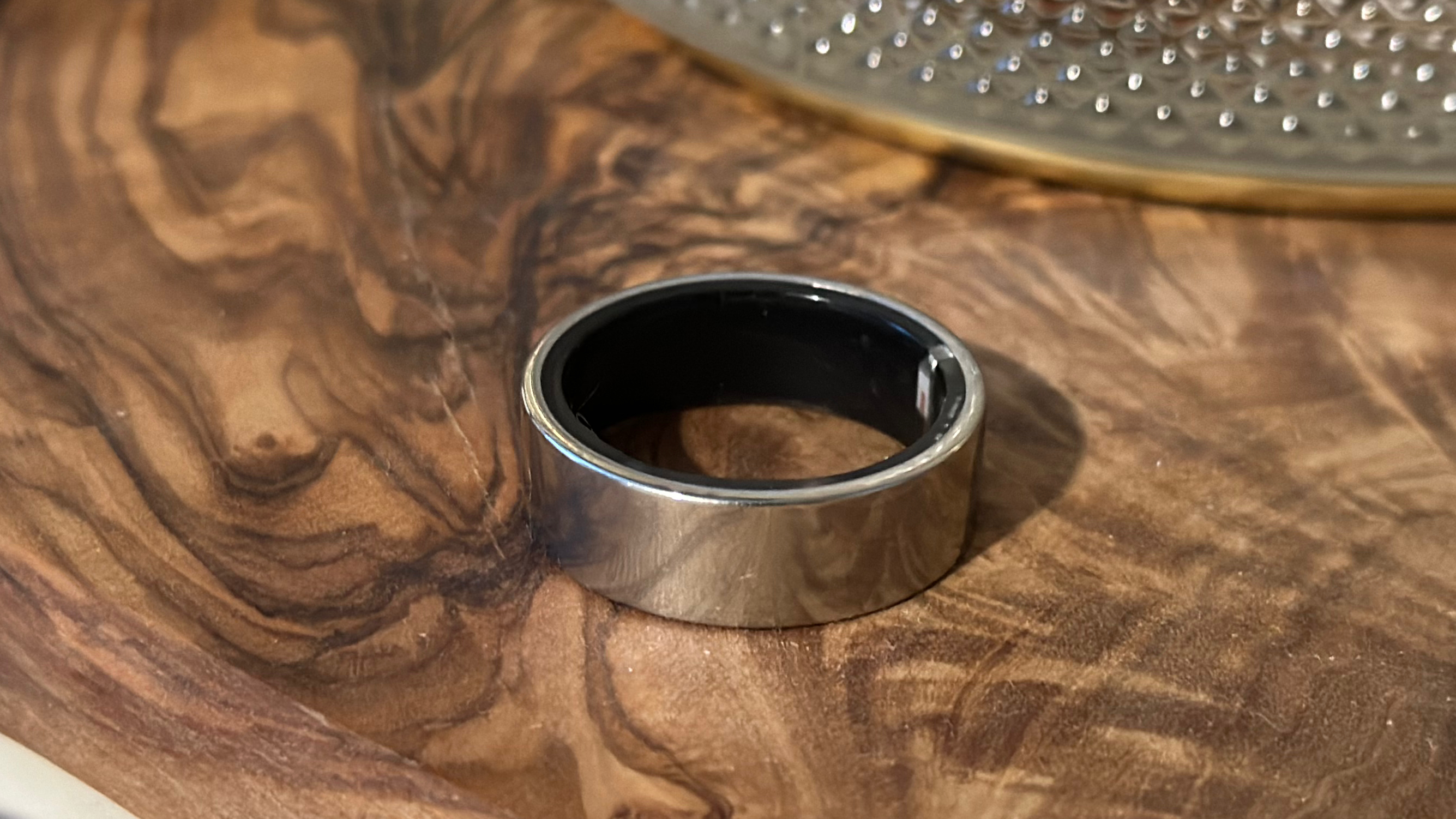
You should buy this if...
- You want a comfortable wearable for tracking your heart health and sleep quality.
- You want a smart ring that's long-lasting and light enough that you forget it's there.
- Your current smartwatch is too bulky for sleep tracking.
You shouldn't buy this if...
- You're already happily wearing your smartwatch to bed with no issues.
- You need a primary wearable tracker for fitness data like GPS.
- You want to hold out for a smart ring from another brand, like Samsung.
Smart rings are the next big category, and everyone is scrambling to push out their first model to compete with the Galaxy Ring and the rumored (but likely) Apple Ring. What's not clear is how excited tech fans and non-tech fans will be for a smart ring.
Tech-loving folks who sleep with a smartwatch might be tempted to switch to a smart ring, but only if it's within their own ecosystem, so the data syncs with their current watch data. In the meantime, Ultrahuman does its best to offer a well-rounded app experience and may sync with your favorite app.
For non-tech fans frustrated with short-lived Apple Watches and faulty Fitbits, the Ultrahuman Ring Air might appeal to them the same way a hybrid watch would, with a subtle design and a decently long-lived battery. That said, the Ring Air's design is more functional than stylish in my mind.
I quite like my Ultrahuman Ring Air for its form factor and the bevy of health information it provides, but it has a long way to go before I see it as a fitness device. But since I already have Garmin for that, I don't necessarily mind that its purpose is so niche.
Blending in
Do you dislike the feeling of something on your wrist while sleeping? If so, the Ultrahuman Ring Air will give you the health data you've been missing out on by keeping your smartwatch on your nightstand. It'll be secondary to your smartwatch or fitness tracker for some things, but you'll appreciate how it subtly keeps tabs on your sleep quality, daily movement, and heart health at all times.







